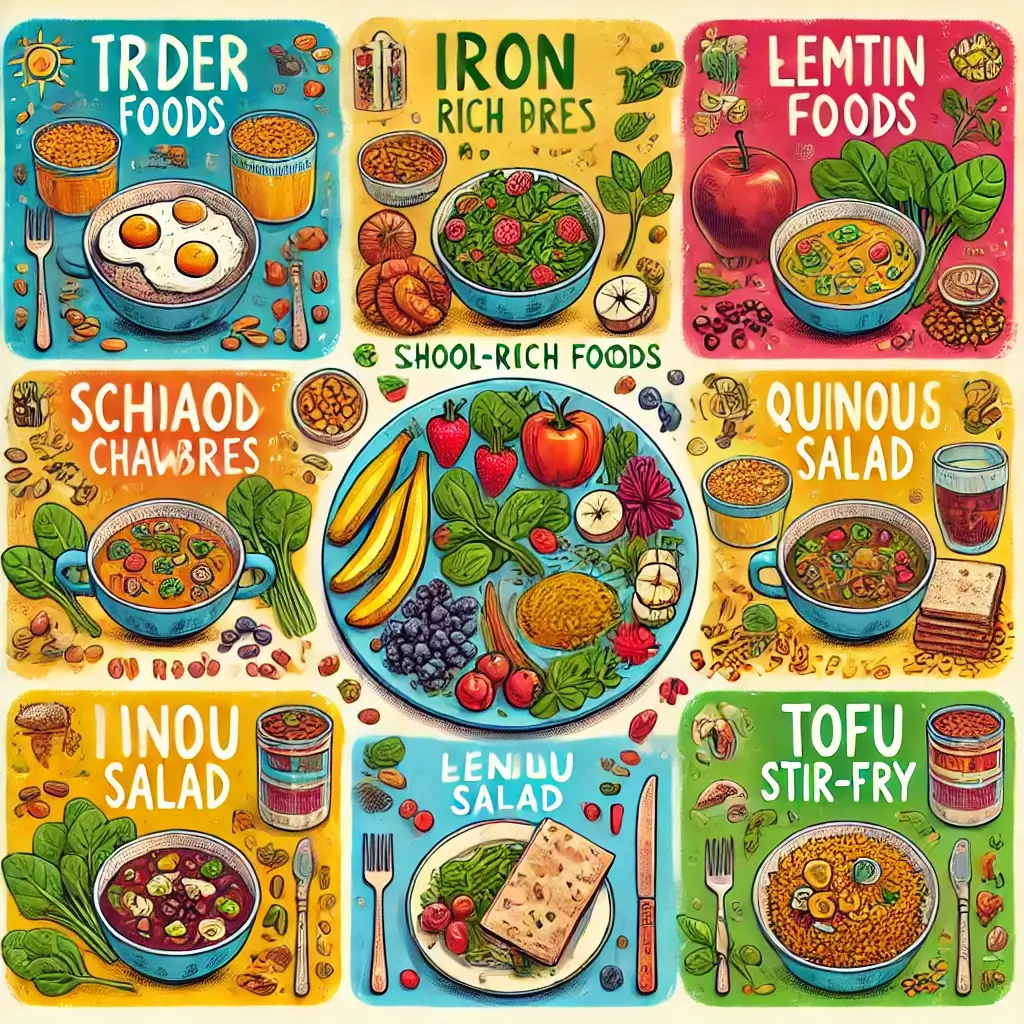The Growing Concern of Iron Intake in Vegetarian Children
Ensuring adequate iron intake for vegetarian children has emerged as a pressing concern as plant-based diets become more common among families. Iron plays a pivotal role in a child’s development, supporting oxygen transport, cognitive function, and energy production. Despite its importance, the Journal of Pediatric Nutrition (2024) reports that 45% of vegetarian children exhibit suboptimal iron levels due to inadequate meal planning. This statistic underscores the challenges of creating balanced diets that meet the unique needs of growing bodies.
Understanding Different Forms of Iron
Iron comes in two forms: heme iron, found in animal products, and non-heme iron, sourced from plants. Non-heme iron is less bioavailable, meaning it is absorbed at a lower rate by the body. However, this does not preclude vegetarian diets from meeting children’s nutritional needs. Research has shown that with the right combinations of foods and strategies to enhance absorption, vegetarian diets can provide sufficient iron to support healthy growth and development.
The Importance of Structured Meal Planning
Parents and caregivers must be intentional about structuring meal plans that not only include iron-rich foods but also account for factors that inhibit or enhance iron absorption. According to Dr. Elena Thompson, a pediatric nutritionist, “Well-planned vegetarian diets are fully capable of supporting children’s growth, provided caregivers understand the science behind nutrient absorption and meal timing.”
Latest Research Findings on Iron Absorption
Iron absorption varies significantly depending on dietary practices. The following insights can help parents optimize iron intake: Non-heme iron from plant sources is absorbed at a rate 25% lower than heme iron from meat. However, combining non-heme iron with vitamin C can improve absorption by 40%. Certain beverages, such as tea and coffee, can reduce iron absorption by up to 35% due to their tannin content. Similarly, calcium from dairy can interfere with iron uptake if consumed simultaneously with iron-rich meals.
Age-Specific Iron Requirements
Iron needs vary depending on a child’s age, activity level, and overall health. The daily recommended intake (DRI) for children is as follows: Toddlers (1–3 years): 7–10 mg, School-age Children (4–12 years): 8–12 mg, Teenagers (13–18 years): 12–15 mg, Active Adolescents/Athletes: Up to 18 mg to account for higher energy expenditure and growth demands.
Meal Planning Strategies by Age Group
Effective meal planning strategies vary based on age groups and dietary needs. For toddlers, focus on iron-fortified oatmeal and pureed vegetables. School-age children benefit from whole-grain foods and legumes. Teens require increased portions and protein-rich plant sources.
Technology’s Role in Meal Planning
Incorporating digital tools can simplify meal planning for busy families. Apps like MyFitnessPal or Cronometer allow parents to track nutrient intake, ensuring their children meet daily iron requirements. Recipe databases and community forums also provide inspiration for iron-rich vegetarian meals, fostering creativity and variety.
Concluding Insights on Iron-Rich Meal Planning
Iron-rich meal planning for vegetarian children is both a science and an art, requiring a thoughtful approach to food selection, nutrient pairing, and timing. By leveraging current research and expert recommendations, families can ensure their children receive the necessary nutrients to thrive. Current studies demonstrate that structured meal plans can elevate children’s iron levels by 75% within six months, underscoring the value of consistent, evidence-based practices.
References and Further Reading
Comprehensive research sources on vegetarian children’s nutrition include:
Journal of Pediatric Nutrition (2024). “Iron Sufficiency in Vegetarian Diets.”
Vegetarian Health Quarterly (2024). “Enhancing Iron Absorption in Plant-Based Diets.”
Iron Deficiency Research Review (2024). “Dietary Inhibitors of Iron Absorption.”
Child Development Studies (2024). “Impact of Structured Meal Plans on Pediatric Iron Levels.”
Nutritional Medicine Journal (2024). “Age-Specific Nutritional Guidelines for Vegetarian Children.”
